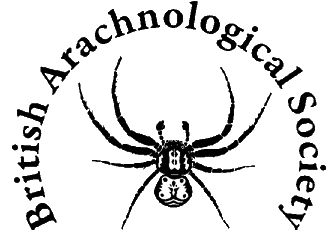Bee L., Oxford, G. & Smith, H. 2020. Britain’s spiders (2nd edn). WILDGuides. Princeton: Princeton University Press. A guide to all 38 of the British families, focusing on spiders that can be identified in the field. Illustrated with a remarkable collection of photographs, it is designed to be accessible to a wide audience, including those new to spider identification. This book combines information on features that can be seen with the naked eye or a hand lens with additional evidence from webs, egg-sacs, behaviour, phenology, habitats and distributions. Individual accounts cover 404 species - all of Britain’s ‘macro’ spiders and the larger money spiders, with the limitations to field identification clearly explained.
Hillyard, P. D. 2005. Harvestmen. Synopses of the British Fauna. Shrewsbury: Field Studies Council. This excellent summary of our harvestman fauna provides accounts of the structure and biology of our 25 species together with easy-to-use illustrated keys and distribution maps.
Jones, D. 1983. The Country Life guide to spiders of Britain and northern Europe. Littlehampton: Littlehampton Book Services Ltd. Out of print.
Jones, D. 1989. A guide to spiders of Britain and northern Europe. London: Hamlyn. Out of print. Colour photographs of most of our larger species of spider in life – around 300 species included. Excellent photos are combined with equally valuable text describing features useful for identification which can be seen in the living spider (many of these features actually become less easy to see when spiders are preserved in alcohol). This book and Jones 1983 (above) are virtually the same but with slightly different titles. However, it is worth tracking down this 1989, hardback printing because the colour reproduction is better. NB. If these prove difficult to obtain, a French-language edition with exactly the same photographs and layout is still available, with the added advantage of a supplementary section covering some typical Mediterranean spiders – see next title.
Jones, D., Ledoux, J-C. & Emerit, M. 2001. Guide des araignées et des opilions d’Europe. Lonay, Switzerland: Delachaux et Niestlé.
Jones-Walters, L. M. 1989. Keys to the families of British spiders. AIDGAP. Shrewsbury: Field Studies Council. A very useful key when first starting out with spiders. Placing a spider in the correct family from general appearance becomes easier with experience, but is an essential first step in naming the species.
Legg, G. & Jones, R. E. 1988. Pseudoscorpions. Synopses of the British Fauna. Shrewsbury: Field Studies Council. As with its sister volume on harvestmen, this provides information on structure and biology of the British pseudoscorpions as well as keys and distribution maps.
Locket, G. H. & Millidge, A. F. 1951/1953. British spiders. Vols. 1 & 2. London: Ray Society. Reprinted as one volume in 1975 by British Museum (Natural History). Out of print.
Locket, G. H. Millidge, A. F. & Merrett, P. 1974. British spiders. Vol. 3. London: Ray Society. Out of print. These three volumes were the standard identification work for spiders before Roberts (see below). Although the illustrations of diagnostic features are not as detailed, and there have been a number of additions to the British fauna since publication, there is an enormous amount of useful information in the text. An essential companion to Roberts if you wish to pursue a serious interest in the identification of British spiders. A CD version comprising all three volumes is published by Pisces CD books and is available from NHBS (see Section 9.4 above).
Roberts, M. J. 1985/1987. The spiders of Great Britain and Ireland. Vol. 1 Atypidae to Theridiosomatidae; Vol. 2 Linyphiidae; Vol. 3 Colour plates. Colchester: Harley Books. Hardback. Out of print.
Roberts, M. J. 1993. The spiders of Great Britain and Ireland. 2-part Compact edition. Colchester: Harley Books. Softback. Part 1 text, comprising vols. 1 & 2 of the hardback edition; Part 2 colour plates. Now published by Brill, Leiden. The standard current identification works for British spiders. The drawings of the male pedipalps and female epigynes are, with few exceptions, stunningly accurate, making identification relatively straightforward once past the initial stages, given a methodical and patient approach. The colour illustrations are also useful with preserved specimens, though less so with living spiders. The text is geared primarily towards identification using the pedipalps and epigynes, so Locket & Millidge is also needed for other features.
Roberts, M. J. 1995. Collins field guide: spiders of Britain and northern Europe. London: HarperCollins. Mike Roberts re-drew all the pedipalps and epigynes and repainted the colour plates for this single-volume field guide. The species coverage differs from the “Big Roberts” in that a small number of additional species from the adjacent continent are also described. Only a relatively few Linyphiidae or money spiders species (around 40) with a distinctive abdominal pattern, some of which can be recognised using a hand lens, are included.
Sauer, F. 2012. The spider families of Europe. Hirschberg: Joerg Wunderlich Publishing House.
Wijnhoven, H. 2009. De Nederlandse hooiwagens (Opiliones). Entomologische Tabellen 3, supplement bij Nederlandse Faunistische Mededelingen. English translation (but without artwork) is available and FREE to download.
